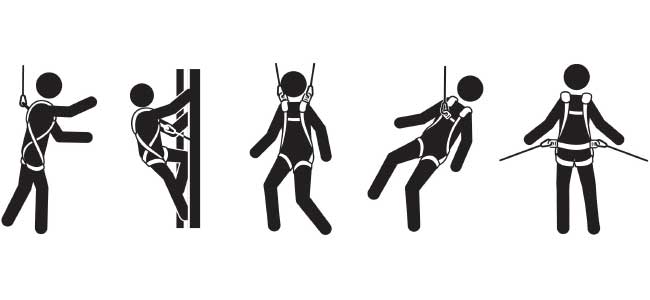
Updated Standards Help Demystify Fall Protection Product Selection
Heightened federal oversight on falls means employers should make sure they’re familiar with fall protection standards and that each worker is using the right type of harness for their particular application.
- By Diana Jones
- Aug 01, 2023
Falls remain the leading cause of fatalities and serious injuries in all industries, but especially in construction, as OSHA noted in announcing its new National Emphasis Program (NEP) on falls in the workplace back in May.
According to U.S. Bureau of Labor Statistics data, slips/trips/falls accounted for nearly 16.5 percent (6,680) of the 40,531 workplace fatalities in all industries from 2014 through 2021, most were “falls to lower level,” which accounted for over 13 percent (5,369) of fatalities during that period.
“Falls to lower level” accounted for 32 percent (2,480) of the 7,861 construction fatalities during this period.
OSHA indicated that its NEP will lead to both construction and non-construction inspections. Non-construction inspections will target rooftop mechanical work/maintenance, utility line work/maintenance (electrical, cable), arborist/tree trimming, holiday light installation, road sign maintenance/billboards, power washing buildings (not connected to painting), gutter cleaning, chimney cleaning, window cleaning, and communication towers.
OSHA is serious about cutting what it called “unprotected worker exposures to fall-related hazards in all industries that can result in serious injuries and deaths.” Employers should anticipate a combination of enforcement, outreach, and compliance assistance—especially at construction worksites, where the majority of fatal falls to lower levels have occurred.
The ABCs of Fall Protection
Heightened federal oversight on falls means employers should make sure they’re familiar with fall protection standards and that each worker is using the right type of harness for their particular application.
There are three essential elements of a fall protection system. At ISEA we call them the ABCs of fall protection:
- Anchorage/Anchorage Connector: Anchorage is commonly referred to as a tie-off point (such as an I-beam); an anchorage connector (such as a cross-arm strap) is used to join the connecting device to the anchorage.
- Body Wear: This is the personal protection equipment (such as a full body harness) worn by the worker.
- Connecting Device: This is the critical link that joins the body wear to the anchorage/ anchorage connector (for example, a shock-absorbing lanyard or retractable lifeline).
This article originally appeared in the August 1, 2023 issue of Occupational Health & Safety.